5 Creative Commons and licensing
Introduction
This chapter includes information about open copyright licences such as Creative Commons (CC), and discusses options for licensing an open textbook and how this interacts with copyright. It looks at other licensing issues, such as terms and conditions for software programs that might be used to create content for an open textbook.
Open licences
Open licences have terms that allow for content to be reused and shared. These might include software licences like the General Public Licence (GPL) or the MIT licence, as well as CC licences for text, images and other media (for example, videos and music). Some websites use bespoke licences tailored to their content while still allowing free use – for example, the Pixabay Content License. But common elements are terms of use that:
- allow sharing
- don’t require payment
- don’t require extra permission from the copyright owner.
Often these licences may require credit or attribution for the creator or acknowledgement of which licence they are used under. Some licences, like the CC Share-Alike licence, are examples of viral licences. These require that any new content created using the original material must be licensed under the same conditions, ensuring the continued openness and shareability of materials.
Creative Commons
Creative Commons is a non-profit organisation that promotes the sharing of information and works through template licences. There are 6 main CC licences that operate within the framework of copyright laws around the world. If a creator or author wants to share their work and sets the conditions for that sharing, they can apply a CC licence to it. The licences explicitly tell the user how they can reuse and share the work, based on 4 core conditions.
 Attribution means crediting or citing the author or creator of the work to which the licence is attached. This element is included in all 6 licences.
Attribution means crediting or citing the author or creator of the work to which the licence is attached. This element is included in all 6 licences.
 Non-commercial use means no use of the work for commercial purposes or any use of derivatives made using the original work for commercial purposes.
Non-commercial use means no use of the work for commercial purposes or any use of derivatives made using the original work for commercial purposes.
 No derivatives means you are not permitted to alter the work or use the work to make new works. It is possible to create derivative works that are not shared, but this defeats the purpose of the CC licence. This condition makes it harder to build on existing research (because no adaptations can be shared), so it may not be the best fit for open textbooks.
No derivatives means you are not permitted to alter the work or use the work to make new works. It is possible to create derivative works that are not shared, but this defeats the purpose of the CC licence. This condition makes it harder to build on existing research (because no adaptations can be shared), so it may not be the best fit for open textbooks.
 Share alike means you can only use or make a new work available under the same conditions as the original CC work. For example, if you copy a photo that has a licence condition “non-commercial share-alike”, that means anything you make that includes the photo must also be non-commercial and licensed under the CC non-commercial share-alike licence.
Share alike means you can only use or make a new work available under the same conditions as the original CC work. For example, if you copy a photo that has a licence condition “non-commercial share-alike”, that means anything you make that includes the photo must also be non-commercial and licensed under the CC non-commercial share-alike licence.
The 6 license types have a mix of these 4 conditions of use. These are (in order of least restrictive to most restrictive in terms of sharing):
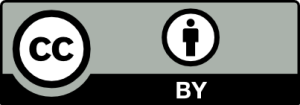 CC-BY or the Creative Commons, Attribution only licence
CC-BY or the Creative Commons, Attribution only licence
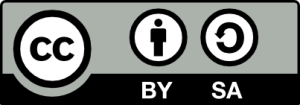 CC-BY-SA or the Creative Commons, Attribution, Share-Alike licence
CC-BY-SA or the Creative Commons, Attribution, Share-Alike licence
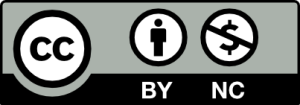 CC-BY-NC or the Creative Commons, Attribution, Non-Commercial use licence
CC-BY-NC or the Creative Commons, Attribution, Non-Commercial use licence
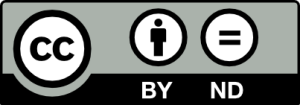 CC-BY-ND or the Creative Commons, Attribution, No-Derivatives use licence
CC-BY-ND or the Creative Commons, Attribution, No-Derivatives use licence
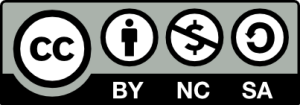 CC-BY-NC-SA or the Attribution, Non-Commercial, Share-Alike licence
CC-BY-NC-SA or the Attribution, Non-Commercial, Share-Alike licence
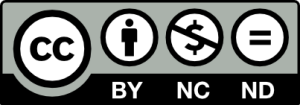 CC-BY-NC-ND or the Attribution Non-commercial, No-Derivatives license
CC-BY-NC-ND or the Attribution Non-commercial, No-Derivatives license
Creative Commons also has a public domain dedication tool that is less well-known. The CC Zero tool allows creators to waive their copyright and place their work as close to the public domain as legally possible. Key points:
- This tool should only be used if creators are willing to forgo attribution and give up their rights in the work.
- It is generally not appropriate for academic authors or universities, who typically want credit for their work.
- It should not be used for works where copyright has already expired.
Academic authors and universities will usually want credit for their work, so this tool is generally inappropriate for open textbook projects. The badge which can be used to represent the CC Zero tool is:
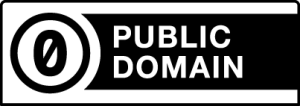
The badge includes the term ‘public domain’. This term can be misunderstood for 2 reasons:
- There is a common misconception that anything freely available online is in the public domain.
- The legal definition of public domain is works whose copyright protection has expired or never existed.
The Creative Commons organisation also has a Public Domain Mark, which can be used to indicate work where copyright has expired. The badge for this is:
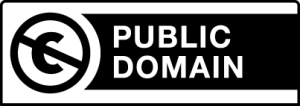
This Mark is appropriate for use where works are no longer protected by copyright and is the only tool that can be applied to works by someone other than the creator.
Choosing a licence for an open textbook
Authors need time to consider which CC licence they want to use for the book and each publisher will have different requirements. All parties need to understand the possibilities of the different licences to make an informed choice. For the open textbooks produced by MUL, the type of CC licence that would be used for each book was included in the publishing contract that the authors signed. The decision was made at an early stage of the project. The authors indicated that they agreed to this by signing the contract.
Creative Commons offers a licence chooser to help creators decide which licence is right for them. It could be useful for authors to use this tool before deciding.
There are many considerations in choosing a licence for an open textbook. A publicly funded institution, like a university, may not wish for the course material being made openly available to be used for commercial purposes. In that case, a CC Non-Commercial licence may be the best fit. However, this can restrict future uses or dissemination of the material – for example, Wikipedia does not accept CC Non-Commercial licensed material.
Authors may wish to further develop ideas expressed in the textbooks in future work and therefore restrict reuse options. In that case a CC No-Derivatives licence might be used.
Authors may want any future uses of the open textbook to be subject to the same licence conditions. In that case a CC Share-Alike licence might be applied. However, Share-Alike can be restrictive to downstream users when those users want to reuse material in ways that the original authors may not have considered.
With the MUL open textbooks, the Authors and MUL did not want commercial interests using the work without explicit permission, so a CC Non-Commercial licence was decided upon.
MUL and CAUL wanted textbooks that would allow sharing and adaptations to be made of the work, so the No-Derivatives licence was not considered. The project team did not want to restrict the reuse of the material for downstream users, so the Share-Alike licences were not considered.
Best practice is to make sure that all content in an open textbook has the same or more open license as the license applied to the book as a whole. In some cases it may be difficult not to include items (images, graphs) with a more restrictive license. In these cases it is important to clearly label the items with the more restrictive license and make sure the existence of these items is detailed on the title page. For example, if photos of people are included, there may be the possibility of harmful use of people’s images. Authors may wish to use a more restrictive licence for such images.
Open textbooks may contain sensitive information or indigenous content where special care is needed to ensure that the information does not lose its meaning by being taken out of context. In those particular circumstances, a No-Derivatives licence may be appropriate.
In the MUL open textbooks, some images of people were made available under a Non-Commercial, No-Derivatives licence. It was hoped that this more restrictive CC licence would provide an extra layer of protection for these images. See also the Privacy and Image Consents chapter for a discussion of privacy concerns with images of real people.
The MUL open textbook authors had concerns about misrepresentation or harmful reuse of Indigenous content. They also wanted the chapters to speak clearly in the Indigenous author’s voice. The No-Derivatives licence on this content indicated to users that the chapter should not be changed.
Creative Commons licences for third party material
Although an open textbook may be licensed under a particular CC licence, there could be elements of the textbook that cannot be licensed in that way. It is not always possible for authors to include only third party material that is licensed under the same CC licence. Figures or images from other sources might be licensable under ‘All Rights Reserved’ or different CC licences. For all rights reserved, permissions will be required that include the right to re-licence the work under the appropriate CC licence. For CC licenced material, licences might be more or less restrictive than the CC licence for the book overall. Where licences are incompatible, permission might be needed or clear labels used to distinguish differently licensed material. However, the use of material licensed under more restrictive terms by authors should be discouraged as this may limit where the book can be indexed. For example, the Open Textbook Library does not include books with parts licensed under the CC No-Derivatives licence.
The MUL open textbooks are licensed under a CC Non-Commercial licence but authors wanted to include figures available under different CC licences. On advice from the Monash Office of General Counsel, when those Creative Commons items were used, clear labels or citations were added to explain that they were available under a different CC licence from the book as a whole. For any material that was licensed under stricter CC licence conditions, care was taken to follow those conditions. For example, with third party material that was licensed under the No-Derivatives licence, the material was reproduced exactly as it appeared in the original, with no changes or derivatives.
Moral rights
One of the requirements of copyright law is moral rights. In Australia, this includes the right to be attributed as the creator of a work, the right not to be falsely attributed as a creator and the right of a creator to have their work treated with integrity. The right of attribution and the right against false attribution is complementary to the necessity of academic integrity in any open textbook and any attribution requirements in CC licences. But it may be useful for authors to know that attribution is not only good academic practice and a term or condition of some open licences, but is also part of copyright law. So there are multiple obligations around giving credit for material used in any open textbook.
Attribution requirements for Creative Commons licences
Citation and attribution are terms that can be used interchangeably in copyright law. Some open access scholars use the term attribution to refer to legal attribution requirements under the terms of CC licences and the term citation for reference styles or quotations. For more information, see Citation vs Attribution and Attribution, Citation and Referencing.
As not all authors are familiar with open access and CC licences, there could be confusion between the usual citation style requirements and having to also include attributions for CC licensed work, which is part of the legal terms of the licence agreement. For example, it is not enough to simply cite the author or creator of a CC licensed work. The particular CC licence that the work is licensed under also has to be cited. A typical attribution or citation for a CC licensed work would have the details of the work, the name of the creator and also wording such as ‘licensed under CC-BY-NC 4.0‘ with a link to the licence. Best practice attribution can be found on the Wikipedia page for CC licence attribution.
Sometimes it might be necessary to indicate that particular third party material is not available for reuse under the same terms as the rest of the chapters, and may lead to different CC licences appearing within the same chapter. This makes it more complicated for users as they have to take account of different reuse conditions, so it should be avoided where possible. However, where figures or tables are being used under different CC licences, that information could be clearly cited in a caption under the figure or at the start of the chapter.
Where significant amounts of third-party text are being reused under a CC licence, this can be cited in footnotes, as per a normal citation, but also include details of what licence it was being used under.
For an example of attributing the reuse of CC licensed text, see the attribution at the end of the Copyright chapter in this book, which states
The Indigenous cultural and intellectual property section was adapted from:
‘Attribution and Using Copyright Material in OER‘ in CAUL Open Educational Resources Professional Development Program: Foundations by Council of Australian University Librarians. The book is licensed under a Creative Commons Attribution-Sharealike 4.0 International License.’
Online tools and licence terms
As mentioned in the Copyright chapter, use of commercial software can cause problems of licence incompatibility for open access textbooks and journal articles. For example, over 9000 images created with Biorender software and licensed under CC Attribution-only licences in open journals are being disputed because the Biorender terms do not allow re-licensing under the same CC licence.
MUL found that graphics being made with commercial software programs were not always able to be re-licensed under CC licences. The Terms of Use of the programs often had no information about re-licensing the outputs that were made with the program. Advice was sought from the Monash Office of General Counsel about the meaning of the licence terms of different software programs and whether the terms were compatible with the CC licence of the chapter. If not, a different software program was used.
Summary of licence issues
- Although there are different types of open licences, OERs are usually licensed under CC licences.
- The benefits of open means that the CC Attribution, Non-Commercial licence was the most suitable licence for the MUL open textbooks generally, allowing for attribution and reuse but not for commercial purposes.
- Different chapters can be published under different CC licences depending on circumstances, as long as publishers, editors and authors agree. For the MUL open textbooks a stricter licence was sometimes required for elements reused from other sources, for Indigenous content or to help protect the privacy of individuals photographed.
- Material was cited and attributed under CC licences following the terms of those licences. This also complied with moral rights requirements.
- Some commercial software programs had licence terms that were not compatible with the CC Attribution, Non-Commercial licence. Advice was provided by the Monash Office of General Counsel about which alternatives were compatible with the CC Attribution, Non-Commercial licence and therefore could be used in the MUL open textbook.
Attribution
All images of Creative Commons badges and icons are from the Creative Commons website and used under a Creative Commons Attribution 4.0 International license. Icons by Font Awesome.
References
Suzor, N., Pappalardo, K., & Stevens, J. (n.d.). Moral rights and performer rights. Wikijuris. https://wikijuris.net/ausip/moralrights/

